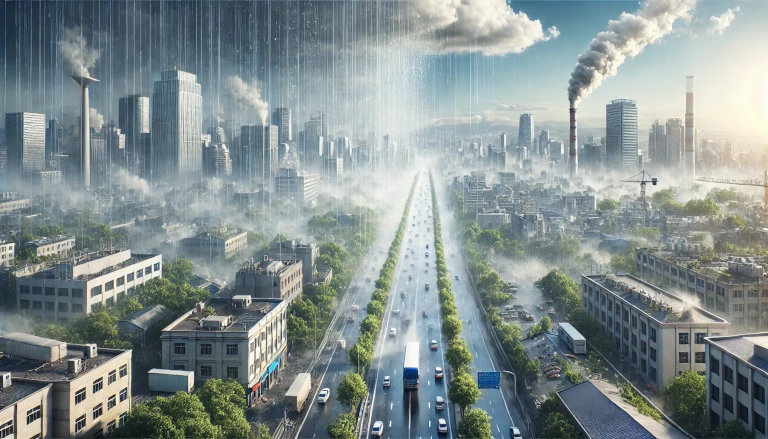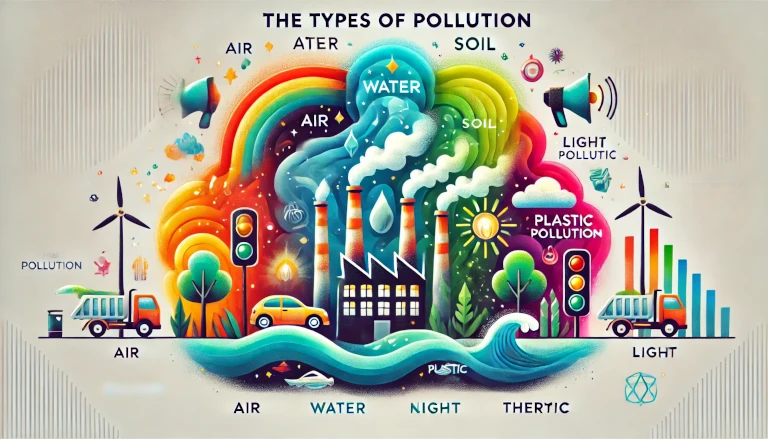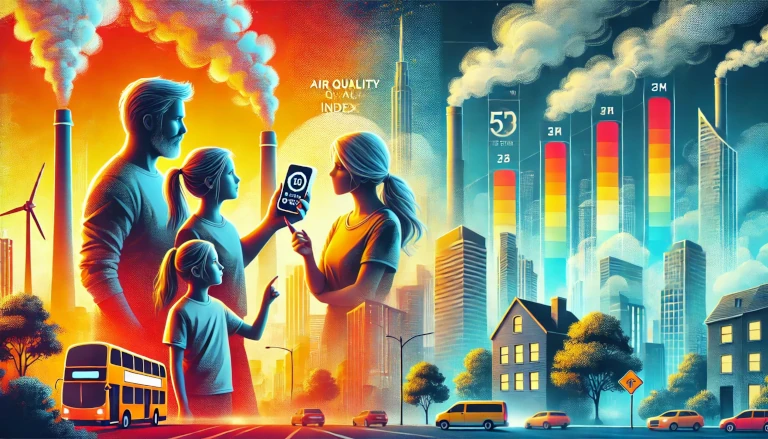Artificial rain, also known as cloud seeding, is increasingly being explored as a solution to reduce air pollution in cities that suffer from high levels of pollutants. This method involves artificially inducing rainfall by dispersing chemicals like silver iodide or sodium chloride into the atmosphere, which can help wash out pollutants such as particulate matter (PM2.5), PM10, and harmful gases like nitrogen dioxide (NO2). As air pollution continues to impact human health, artificial rain offers a promising, albeit temporary, solution to mitigate the effects of smog and hazardous air quality.
What is Artificial Rain and How Does It Work? 🌧️
Artificial rain refers to a weather modification technique called cloud seeding. This method involves dispersing substances like silver iodide or dry ice into clouds to encourage the formation of rain droplets. By increasing the amount of moisture in clouds, cloud seeding helps induce rainfall in areas that are experiencing severe air pollution. This artificial rain can effectively help clear the air by washing out pollutants suspended in the atmosphere.
Key Mechanisms of Artificial Rain:
- Cloud Seeding Agents: Chemicals like silver iodide act as nuclei around which water vapor condenses to form rain droplets.
- Increased Precipitation: By increasing cloud moisture, cloud seeding promotes rainfall, which brings pollutants down to the ground, improving air quality.
Why Use Artificial Rain to Combat Air Pollution? 🌬️
In heavily polluted cities, particularly during periods of smog or inversions, the air becomes filled with harmful particles that can exacerbate respiratory problems and lead to chronic illnesses. Artificial rain helps reduce the concentration of these pollutants by physically removing them from the atmosphere through precipitation.
Health and Environmental Benefits:
- Reduces Particulate Matter: Artificial rain can wash out PM2.5 and PM10, reducing respiratory irritants.
- Cleanses Harmful Gases: Pollutants such as sulfur dioxide (SO2), nitrogen oxides (NOx), and carbon monoxide (CO) are brought down with rainfall, improving overall air quality.
- Immediate Relief: Cities experiencing dangerous levels of air pollution, like Beijing or Delhi, can experience short-term relief through cloud seeding.
How is Artificial Rain Implemented? 💧
Cloud seeding is typically carried out by either aircraft or ground-based equipment. Planes disperse chemicals into clouds, while ground-based systems shoot particles upward. This technology has been used in countries like China, the UAE, and India to tackle air pollution and even manage water shortages.
When and Where is Cloud Seeding Used?
- During High Pollution Days: In cities experiencing prolonged high pollution levels, especially during winter months when air quality tends to be worse.
- Polluted Urban Areas: Cities like Shanghai, Mexico City, and Los Angeles have explored the use of artificial rain as a means of reducing air pollution.
Advantages of Artificial Rain in Reducing Air Pollution 🌟
- Immediate Air Quality Improvement: Artificial rain can quickly reduce air pollution levels by removing particles and gases from the air.
- Cost-Effective in the Short Term: While cloud seeding is expensive, the immediate improvement in air quality could reduce healthcare costs related to pollution-induced illnesses.
- Reduction of Respiratory Problems: Clean air resulting from artificial rain can lead to reduced cases of asthma, chronic obstructive pulmonary disease (COPD), and allergies.
Disadvantages of Artificial Rain ⚖️
- Short-Term Solution: While cloud seeding can offer immediate relief, it does not address the root causes of air pollution, such as vehicle emissions or industrial waste.
- Environmental Concerns: Some chemicals used in cloud seeding, like silver iodide, may have long-term environmental consequences, especially if used frequently.
- High Costs: Implementing artificial rain is expensive and may not be sustainable for long-term pollution control. Countries may have to allocate substantial funds to maintain cloud seeding efforts.
Cost Benefits of Using Artificial Rain 💰
Despite the high costs associated with cloud seeding, there are several economic benefits:
- Reduction in Healthcare Costs: Cleaner air reduces hospital admissions for pollution-related illnesses, leading to significant savings on healthcare expenses.
- Increased Productivity: Healthier air leads to fewer lost workdays due to pollution-related illnesses, increasing economic productivity.
- Boost to Tourism: In cities where air pollution negatively impacts tourism, cleaner air could improve the number of visitors and benefit local economies.
When is Artificial Rain Most Effective? ⏰
Artificial rain is most effective during periods of high pollution, such as during winter smog seasons, particularly in cities with temperature inversions. It’s also useful when natural rainfall is insufficient to clear pollutants from the atmosphere. Countries like China often use artificial rain to clear the air before large public events, such as the Beijing Olympics, where clean air was a priority.
Alternatives to Artificial Rain 🌿
While artificial rain is a temporary solution, there are other, more sustainable methods to tackle air pollution:
- Renewable Energy: Switching to solar or wind energy can reduce the reliance on fossil fuels and lower emissions.
- Green Spaces: Expanding urban green spaces like parks and planting more trees can naturally improve air quality by absorbing pollutants.
- Public Transportation: Encouraging public transport use over personal vehicles can significantly reduce emissions and improve long-term air quality.
Artificial Rain as a Temporary Relief for Polluted Cities 🌧️
Artificial rain provides a short-term solution to the problem of air pollution by clearing the air of harmful particles and gases. While it offers immediate relief and has been successfully implemented in countries facing severe pollution, it is not a long-term fix. The high costs and potential environmental impacts must be weighed against the benefits. Cities that implement artificial rain should also focus on sustainable practices to address the root causes of pollution, ensuring cleaner air for the future.
Artificial rain, also known as cloud seeding, offers immediate relief from air pollution by washing out harmful particles. Learn how it works, its benefits, and limitations. 🌧️
Discover more from Green Ecosystem - Renewable Energy, Agriculture, and Environmental Sustainability
Subscribe to get the latest posts sent to your email.


